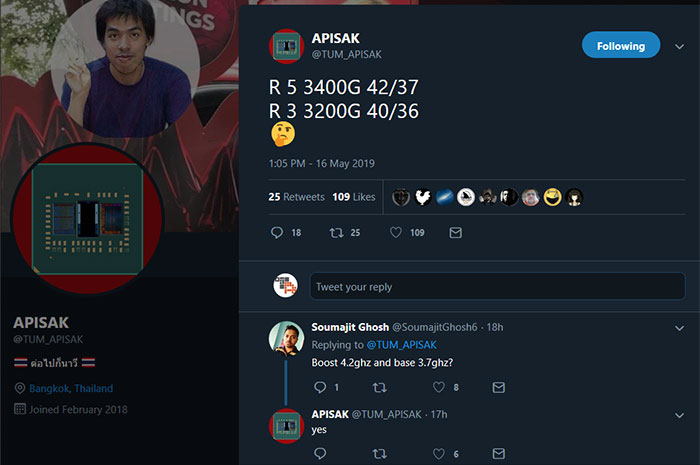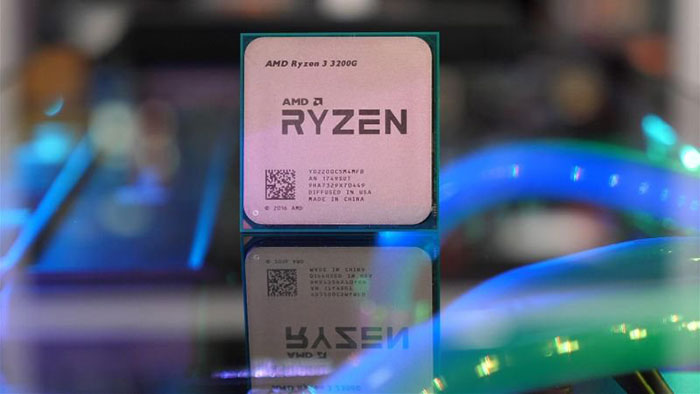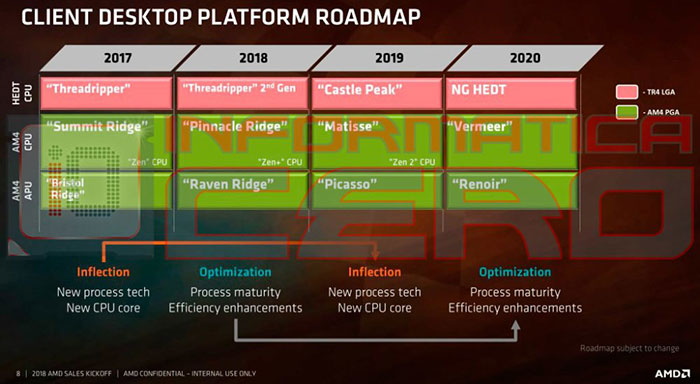AMD is almost ready to reveal its latest APUs, sometimes referred to as the Picasso APUs. These Ryzen 3000 series APUs might not stoke up that much excitement, as they are based upon the 12nm process, and Zen+ CPU cores (compared to the 7nm Zen 2 cores of the upcoming CPUs), but they will be welcome upgrades nonetheless. Prolific chip leaker Tum Apisak has revealed some interesting details of the upcoming AM4 Picasso APUs ahead of release.

In a short Tweet, as in the screenshot above, Apisak told followers that he had unearthed evidence of an AMD Ryzen 5 2400G and a Ryzen 3 3200G. He added clockspeed indications that the Ryzen 5 3400G would come with a base/boost of 3.7 - 4.2GHz, and the Ryzen 3 3200G would offer 3.6 - 4.0GHz. Later on he confirmed that the core/thread counts would remain as previously and shared a link to the SiSoftware Official Live Ranker entry for the AMD Ryzen 5 3400G.
|
|
R3 2200G |
R3 3200G |
R5 2400G |
R5 3400G |
|
Cores/Threads |
4/4 |
4/4 |
4/8 |
4/8 |
|
Base Clock |
3.5GHz |
3.6GHz |
3.6GHz |
3.7GHz |
|
Boost Clock |
3.7GHz |
4.0GHz |
3.9GHz |
4.2GHz |
|
GPU shaders |
512 @1000MHz |
512? |
704 @1250MHz |
704? |
|
TDP |
65W |
65W? |
65W |
65W? |
|
Launch Price |
$99 |
? |
$169 |
? |
Above I have tabulated the old vs new, Raven Ridge vs Picasso, stats that we are reasonably certain about. It isn't expected that the Vega graphics compute units will be boosted in quantity or speeds. With that in mind the new AMD Ryzen 5 2400G and a Ryzen 3 3200G are likely to boast Vega 11 and Vega 8 respectively, with the numeral suffix signifying the Compute Units (CU) count.

To recap, Picasso is an optical die shrink of existing Raven Ridge APU parts from 14nm to 12nm, from Zen to Zen+. These APUs are expected to launch soon. However, we don't have any firm schedule information for the next-gen APU that will feature Zen2 cores other than it is expected to be codenamed Renoir and will arrive in 2020.

HEXUS reviewed the AMD Ryzen 5 2400G and Ryzen 3 2200G back in February 2018.













